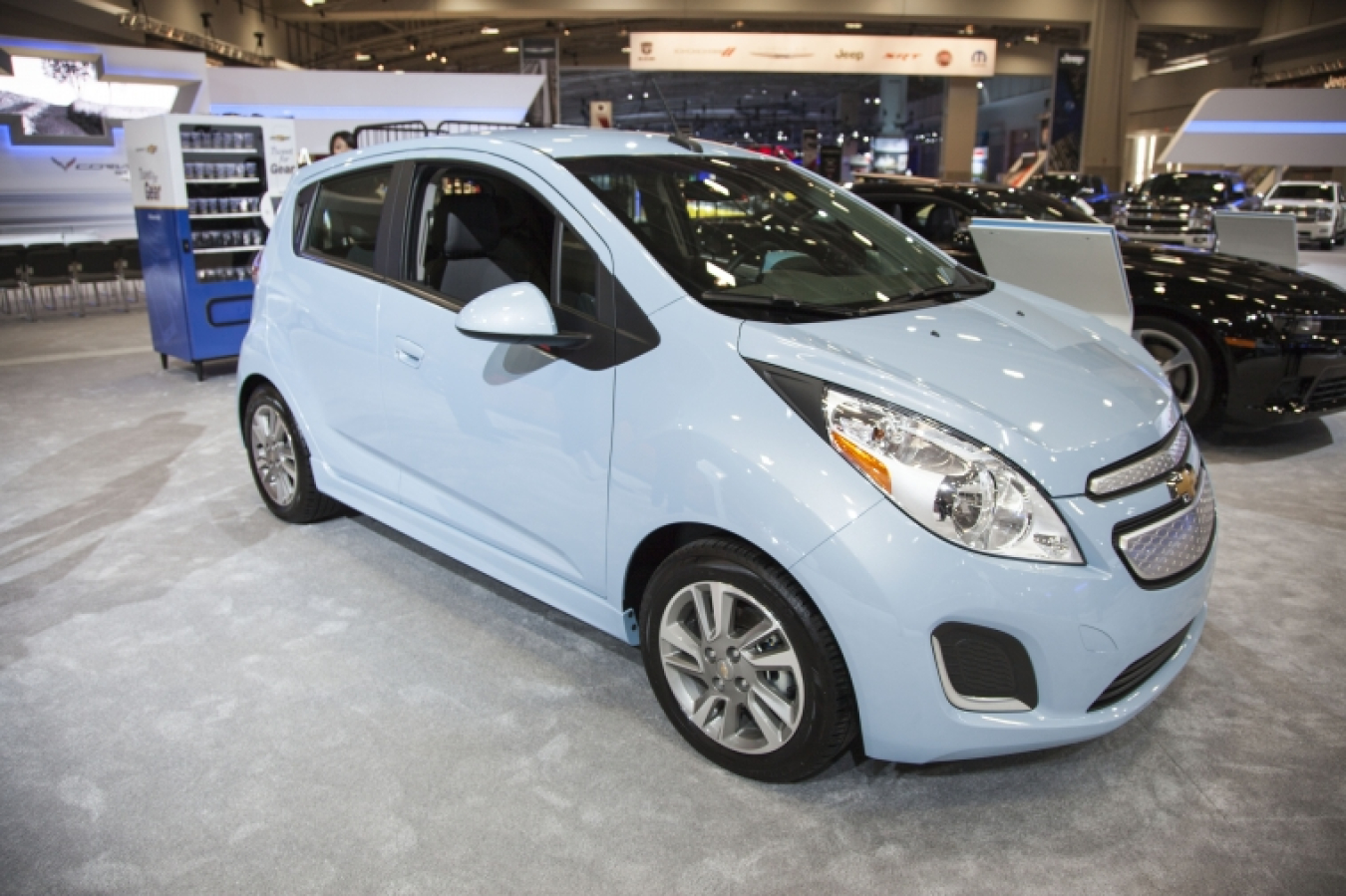
The Chevy Spark EV at the Washington Auto Show.
Technology innovation comes in many forms – sometimes, it’s as simple as adapting a recent but un-commercialized innovation to a seemingly-unrelated problem. That’s what happened when General Motors needed a battery tray and enclosure for the Chevy Spark EV; they found the answer in a lightweight composite technology they developed previously, through a Vehicle Technologies Office-supported project. Research and development already done on the Automotive Composites Consortium Underbody project to design, build, analyze and test a lightweight, crashworthy underbody allowed the Spark’s designers to meet the new vehicle’s needs and bring it to production on schedule.
The original project, which focused on minimizing the weight and cost of the underbody of a vehicle while carrying its crash loads, developed an underbody 13 kg lighter than the one in the Cadillac CTS base vehicle. In comparison to the original application, which used high strength steel, the composite underbody reduced weight through the use of a coarse weave glass fabric that was impregnated with a vinyl ester resin. The engineers designed the subsystem to have zones of varying thicknesses, enabling areas of higher strength where needed. When researchers tested the underbody through a simulated 40 mph crash, they found it validated the subsystem’s safety and predictability.
By utilizing this innovation, the Chevy Spark EV team refined the design and production process to build the battery tray and enclosure. Without this technology, the release of the Chevy Spark EV may have been delayed, decreasing the number of plug-in electric vehicle models available for consumers to purchase. The Spark also helps pave the way for GM to produce future all-electric vehicles, such as the upcoming Chevy Bolt.
Bringing this technology to market has netted the GM team a number of accolades. The Society of Plastics Engineers gave the team an innovation award and Composites World featured it in a major article. In addition, GM recognized the importance of this effort, presenting the team with the “Boss Kettering” award, the company’s highest honor for innovation.
The Office of Energy Efficiency and Renewable Energy (EERE) success stories highlight the positive impact of its work with businesses, industry partners, universities, research labs, and other entities.
